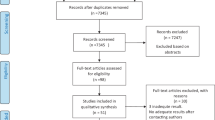Abstract
Purpose
The estimated prevalence of poor sleep in patients with non-specific chronic low back pain is estimated to 64 % in the adult population. The annual cost for musculoskeletal pain and reported poor sleep is estimated to be billions of dollars annually in the US. The aim of this cohort study with one-year follow-up was to explore the role of impaired sleep with daytime consequence on the prognosis of non-specific neck and/or back pain.
Methods
Secondary analysis of a randomized controlled trial, including 409 patients.
Results
Patients with good sleep at baseline were more likely to experience a minimal clinically important difference in pain [OR 2.03 (95 % CI 1.22–3.38)] and disability [OR 1.85 (95 % CI 1.04–3.30)] compared to patients with impaired sleep at one-year follow-up.
Conclusion
Patients with non-specific neck and/or back pain and self-reported good sleep are more likely to experience a minimal clinically important difference in pain and disability compared to patients with impaired sleep with daytime consequence.
Similar content being viewed by others
References
Roth T (2007) Insomnia: definition, prevalence, etiology, and consequences. J Clin Sleep Med 3:S7–10
Jansson-Frojmark M, Linton SJ (2008) The course of insomnia over one year: a longitudinal study in the general population in Sweden. Sleep 31:881–886
Manchikanti L, Singh V, Datta S, Cohen SP, Hirsch JA (2009) Comprehensive review of epidemiology, scope, and impact of spinal pain. Pain Physician 12:E35–E70
Rosekind MR, Gregory KB (2010) Insomnia risks and costs: health, safety, and quality of life. Am J Manag Care 16:617–626 12693 [pii]
Luo X, Pietrobon R, Sun SX, Liu GG, Hey L (2004) Estimates and patterns of direct health care expenditures among individuals with back pain in the United States. Spine (Phila Pa 1976) 29:79–86. doi:10.1097/01.BRS.0000105527.13866.0F
Kelly GA, Blake C, Power CK, O’Keeffe D, Fullen BM (2011) The association between chronic low back pain and sleep: a systematic review. Clin J Pain 27:169–181. doi:10.1097/AJP.0b013e3181f3bdd5
Bahouq H, Allali F, Rkain H, Hmamouchi I, Hajjaj-Hassouni N (2013) Prevalence and severity of insomnia in chronic low back pain patients. Rheumatol Int 33:1277–1281. doi:10.1007/s00296-012-2550-x
Paanalahti K, Holm LW, Magnusson C, Carroll L, Nordin M, Skillgate E (2013) The sex specific interrelationship between spinal pain and psychological distress across time in the general population. Results from the Stockholm Public health Study. Spine J. doi:10.1016/j.spinee.2013.11.017
Buysse DJ (2013) Insomnia. JAMA 309:706–716. doi:10.1001/jama.2013.193
Finan PH, Goodin BR, Smith MT (2013) The association of sleep and pain: an update and a path forward. J Pain 14:1539–1552. doi:10.1016/j.jpain.2013.08.007
Morin CM, Gibson D, Wade J (1998) Self-reported sleep and mood disturbance in chronic pain patients. Clin J Pain 14:311–314
Skillgate E, Vingard E, Alfredsson L (2007) Naprapathic manual therapy or evidence-based care for back and neck pain: a randomized, controlled trial. Clin J Pain 23:431–439. doi:10.1097/AJP.0b013e31805593d8
Nordin M, Åkerstedt T, Nordin S (2013) Psychometric evaluation and normative data for the Karolinska Sleep Questionnaire. Sleep Biol Rythms. doi:10.1111/sbr.12024
Aronsson G, Astvik W, Gustafsson K (2010) Arbetsvillkor, återhämtning och hälsa—en studie av förskola, hemtjänst och socialtjänst
Von Korff M, Ormel J, Keefe FJ, Dworkin SF (1992) Grading the severity of chronic pain. Pain 50:133–149 0304-3959(92)90154-4 [pii]
van Tulder M, Malmivaara A, Hayden J, Koes B (2007) Statistical significance versus clinical importance: trials on exercise therapy for chronic low back pain as example. Spine (Phila Pa 1976) 32:1785–1790. doi:10.1097/BRS.0b013e3180b9ef49
Farrar JT, Young JP Jr, LaMoreaux L, Werth JL, Poole RM (2001) Clinical importance of changes in chronic pain intensity measured on an 11-point numerical pain rating scale. Pain 94:149–158 S0304-3959(01)00349-9 [pii]
Pincus T, Santos R, Breen A, Burton AK, Underwood M (2008) A review and proposal for a core set of factors for prospective cohorts in low back pain: a consensus statement. Arthritis Rheum 59:14–24. doi:10.1002/art.23251
Akerstedt T, Knutsson A, Westerholm P, Theorell T, Alfredsson L, Kecklund G (2002) Sleep disturbances, work stress and work hours: a cross-sectional study. J Psychosom Res 53:741–748 S0022399902003331 [pii]
Karasek R, Brisson C, Kawakami N, Houtman I, Bongers P, Amick B (1998) The Job Content Questionnaire (JCQ): an instrument for internationally comparative assessments of psychosocial job characteristics. J Occup Health Psychol 3:322–355
StataCorp (2011) Stata statistical software: release 12. StataCorp LP, College Station, TX
Nitter AK, Pripp AH, Forseth K (2012) Are sleep problems and non-specific health complaints riskfactors for chronic pain? A prospective population-based study with17 year follow-up. Scand J Pain 3:210–217
Mullington JM, Simpson NS, Meier-Ewert HK, Haack M (2010) Sleep loss and inflammation. Best Pract Res Clin Endocrinol Metab 24:775–784. doi:10.1016/j.beem.2010.08.014
Skillgate E, Bohman T, Holm LW, Vingard E, Alfredsson L (2010) The long-term effects of naprapathic manual therapy on back and neck pain—results from a pragmatic randomized controlled trial. BMC Musculoskelet Disord 11:26. doi:10.1186/1471-2474-11-26
Mathias SD, Crosby RD, Qian Y, Jiang Q, Dansey R, Chung K (2011) Estimating minimally important differences for the worst pain rating of the Brief Pain Inventory-Short Form. J Support Oncol 9:72–78
Jackowska M, Dockray S, Hendrickx H, Steptoe A (2011) Psychosocial factors and sleep efficiency: discrepancies between subjective and objective evaluations of sleep. Psychosom Med 73:810–816. doi:10.1097/PSY.0b013e3182359e77
Acknowledgments
The financial support for the study was obtained from the Swedish Naprapathic Association. The data collection was financially supported by the Swedish Research Council.
Conflict of interest
The authors declared that they have no conflict of interest in connection with this paper.
Author information
Authors and Affiliations
Corresponding author
Rights and permissions
About this article
Cite this article
Paanalahti, K., Wertli, M.M., Held, U. et al. Spinal pain—good sleep matters: a secondary analysis of a randomized controlled trial. Eur Spine J 25, 760–765 (2016). https://doi.org/10.1007/s00586-015-3987-x
Received:
Revised:
Accepted:
Published:
Issue Date:
DOI: https://doi.org/10.1007/s00586-015-3987-x




